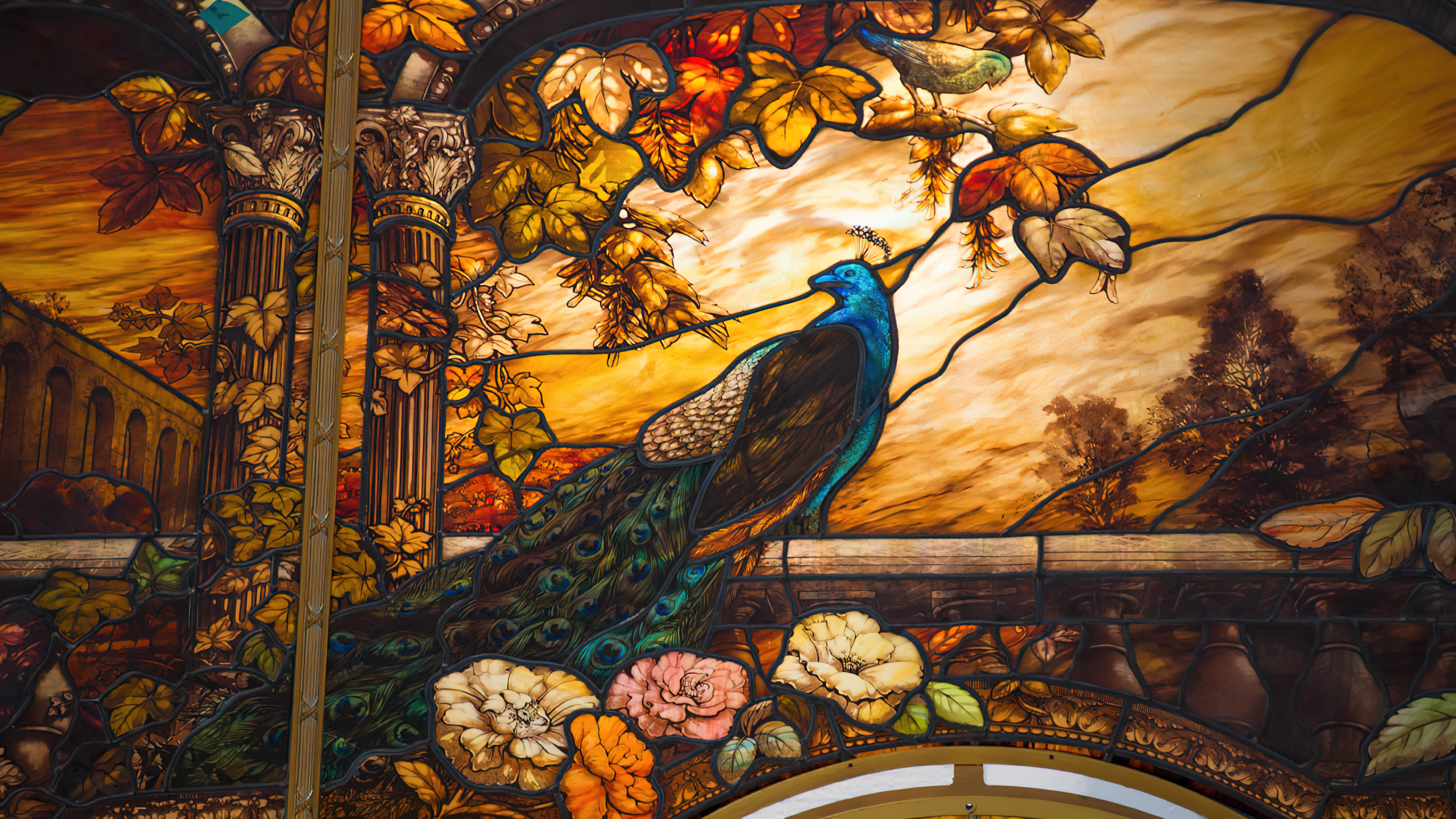Symphony of Light
Symphony of Light
Master stained glass artist Eric Bonte shares the step by step process of constructing his dazzling creations.
A master of ancestral French glass making techniques, Eric Bonte is one of the foremost stained glass artists working in the world today. Under his guidance, his team of dedicated artists and technicians have created glass roofs and ceilings in such diverse locations as Sharm el Sheikh, Strasbourg, Paris, Kuwait, Jeddah, Oman, Tokyo, and Saint Petersburg. Specializing in the cupola design, Eric passionately explores the infinite play of light and color through his respective medium, always striving for artistic beauty and technical perfection in his creations.
How long have you been working with the medium of stained glass?
Since childhood I always knew I wanted to work in the arts. I didn't plan to become a stained glass artist however until after I obtained my bachelor’s degree, and attended the National School of Applied Arts and Crafts in Paris. There were a lot of specialities at this school, but when I first walked into the stained glass studio I became fascinated by the colors and light; I discovered stained glass was a very artistic and technical art, and decided to dedicate myself to it.
Upon graduation I immediately took over a stained glass studio in Issy-les-Moulineaux, close to Paris. It was previously owned by a man named J. J. K. Ray, who was about 80 years old and was happy to sell his studio to me. Unfortunately he died shortly afterwards, but I decided to carry on in a similar spirit to his approach, specializing in more creative projects rather than restoration work, using traditional techniques as well as innovative approaches like sandblasted engraving.
How did you come to specialize in the cupola design?
A client once asked me to create a stained glass ceiling for a project in Kuwait City, which was the first dome I ever made. Then in 1987 I was commissioned to realize the largest stained glass order in the world, 8400 m2 of stained glass (3 times the glass surface of the Chartres Cathedral).
I created France Vitrail International for this order, and we worked for 18 months with 60 craftspeople, creating a stained glass dome that was around 40 m in diameter! At the end of this massive undertaking we returned to working on smaller projects for customers all over the world, particularly in Saudi Arabia, where interior and outdoor glass domes are very common.
What does the process of creating these projects entail?
Each work I create is a new story; I have to develop a relationship to each customer in order to understand the essence and spirit of their dream. I then create a dome that not only fulfills their vision, but also enriches and compliments the space where it will be displayed. Through this process, their dream also becomes my own.
First, the project is drawn as a model at 1/10th scale, matching the client’s expectations in terms of style and color. Then for the actual creation process all panels are redrawn in detail at full scale, piece by piece.
Next, the cutting process focuses on the beauty of the shapes. To obtain a quality rendering, choice of glass is paramount—antique blown glass, antique plated glass, patterned glass, pasted glass, iridescent glass, richly colored glass, etc., all enrich the vibrancy of colors, the play of transparency and glossiness, and the reflections upon the glass.
The colors and textures of the glass are then further enhanced by paint work, which allows for greater finesse and detail. Just like a painter before his palette, the glassblower draws and colors in successive steps, and firing allows each step to become forever fixed upon the glass.
Our lead setting method, inherited from ancestral techniques, allows for the assembly of the various pieces of glass. The layout of the lead is important, because it adds to the graphic quality of the patterns.
Sandblasting allows us to create an extra sculptural quality—the glass is scooped and carved with high power projected sand, creating ornamental pieces such as medallions that resemble antique cameos. Through the catching of light, and combinations of gloss and matte, transparency and opalescence, sandblasting work adds even more subtleties to the glasswork.
Finally, the domes are packed, shipped, transported and assembled on site. Everything is planned so that the installation is carried out with the workshop team or by local workers. Packed in secure wooden crating made in the workshop, the domes may travel by airplane, boat or road, depending on the client’s needs.
Are there any recent projects you’ve been working on that you’d like to share?
An interesting project I undertook recently involved an art exhibition at Galerie Capazza in Nançay, France—I created a stained glass dome specifically for this event, and displayed this along with some of my glass sculptures in the garden of the gallery, enclosing the dome and sculptures within a bubble tent designed to protect them.
The color and detail of your pieces are very diverse and creative; from what sources do you draw your inspiration?
I like to see the delighted and amazed eyes of people looking at their new interiors—art is for me a way to help people to feel uplifted, and to develop and explore their aesthetic sensibility through my own.
I always try to stay open to the beauty of things—'life is only a reflection of the colors we give it.' I believe this is why everything can be and actually is a source of inspiration... just life itself!
To learn more about the work of Eric Bonte please visit:
— www.ericbonte-maitreverrier.com —








